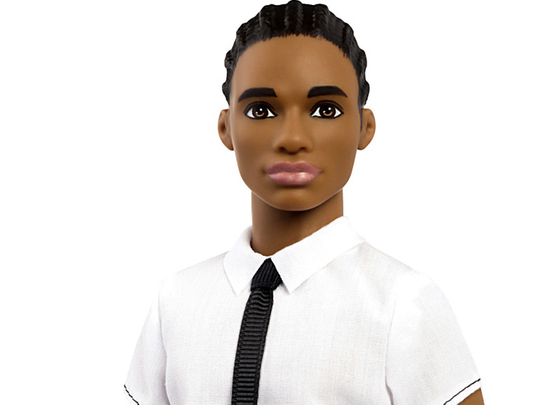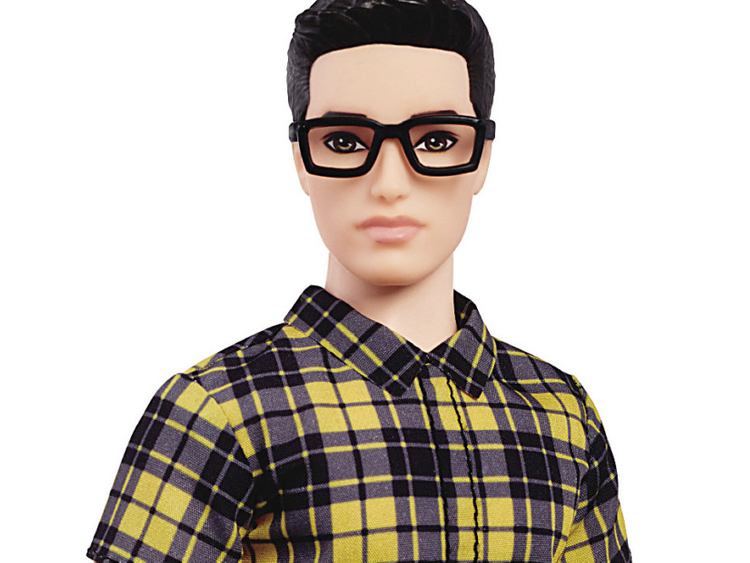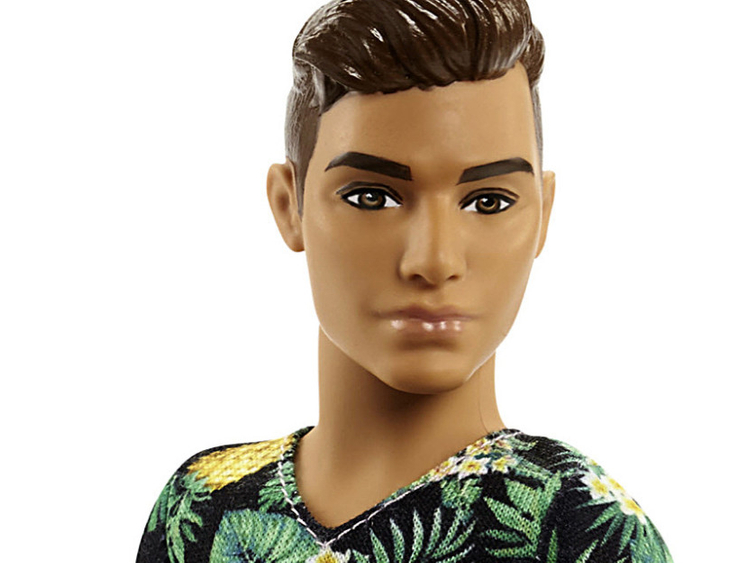
Last year when El Segundo-based Mattel unveiled a bumper crop of new Barbies, including curvier, taller and more petite versions of its flagship fashion doll, one social media commenter quipped, “But what about #dadbod Ken?” referring to the perfectly chiselled abs and moulded plastic hair of Ken Carson, Barbie’s longtime arm candy companion.
The other very tiny shoe drops today as Mattel starts selling a cornucopia of new Kens that includes two new body types dubbed “slim” and “broad” (the latter of which, with its slightly thicker middle, invites dad-bod comparisons), six new moulded hairstyles, including cornrows and an on-trend man bun, and a total of seven skin tones.
It’s certainly not the first time the 56-year-old boyfriend of Barbie has switched up his look. (Who could forget 1993’s Magic Earring Ken?) However, it does mark the most diverse Ken squad to date. Mattel frames it as a natural progression, coming the year after the Barbie diversity push, but this is just as much, if not more so, a business decision for the toy company that’s been trying to turn around its core Barbie business.
The introduction of the more diverse Barbies in January of last year was credited with helping boost 2016 worldwide sales of the company’s Barbie division 7 per cent from the previous year. However, first quarter sales at the US’ largest toymaker were down 15 per cent this year, and in February, the company saw a new chief executive, Margo Georgiadis, take the helm.
Having the new crop of Ken dolls is “definitely going to help,” said Jim Silver, chief executive and editor in chief of TTPM.com, a toy-review website. “I’m not going to say it’s a game changer, but is it a piece of the puzzle? Yes... The play pattern is that for every six to eight Barbies [a child] has, they generally have one Ken. So if you have a Ken kids aren’t interested in, that could affect sales. What’s happening needed to be done. They needed to do this. It’s the next step.”
Like the various permutations of Barbie old and new, the latest additions are still doll-like, with longer legs and bigger heads than a scaled-down human. And because the body tweaks are compared against the original Ken silhouette, these changes are most noticeable when the dolls are standing next to each other.
In addition to a slightly larger — but still not big — belly, “broad” Ken’s arms are wider at the pecs and wrist, while “slim” Ken is more petite in both those areas, with the fluctuations in waistline most obvious when Ken is less than fully dressed.
Apart from the skin tones, which range from pasty Goth teen pale to dark brown (with sprinkle of freckles along the way), the most instantly noticeable change comes by way of Ken’s coif. The smart side-part styles that defined decades of classic Ken have been joined by close-cropped hairdos: the shaggy-on-top/faded-on-the-sides styles, fashionable cornrows and the love-it-or-hate-it hipster hairstyle, the man bun, with a moulded button of hair at the back of Ken’s crown.
For what it’s worth, giving the classically handsome Ken a man bun makes him look like a miniature David Beckham. Also, one version of Ken comes with a pair of silver sunglasses, while another wears spectacles.
Although there aren’t any bearded Kens, bald Kens or tattoo-sporting Kens, that doesn’t mean there won’t be more Kens to come. “We want to do beards,” said Robert Best, senior director of Barbie Design. “Facial hair is definitely a thing. There’s going to be changes that we keep pushing, but you have to launch with something. It’s progress, not perfection.”
A total of 15 new and diverse Kens debuts today, enough to form three tiny basketball teams, which brings up one obvious omission from the Ken lineup.
“We wanted to add a taller dude,” Best said. “That’s one signifier where you’re really able to see a difference. Height adds variety in a very visual way.”
The challenge, Best said, wasn’t vertical-height bias but merchandising. “It’s actually a stupid packaging/manufacturing limitation. Currently, we have to fit into store shelving and shelving limits how tall we can go. That’s a real thing.”















